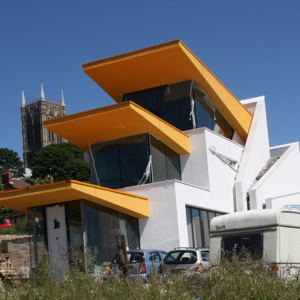As the amount of technology and automation grows in new “Smart Homes” across America, there is another silent, growing problem – soundproofing. These homes are outfitted with 7.1 speaker systems, entertainment centers, in-home theaters, and even music studios. However, all of this technology integration can create a noisy environment that installation firms don’t always know how to address.
Residential Soundproofing
In these cases, a systematic approach to acoustics and soundproofing should be considered. Often-times there are 1-2 “critical” areas in the home that must be addressed above all others. Whether it is the source room (outlined above), receiving room (such as a Home Office or Master Bedroom), or flanking paths (outlets, ducts, etc.), the designer should consider the cost and schedule impacts of improving the STC or IIC ratings of the systems.
All acoustical designs begin with the Source-Path-Receiver approach to determine how best to treat the problem. It can be very cost-effective to soundproof a theater room with soundproofing membranes, for instance, but a shared ducting system between the two may limit the effectiveness of this approach. By beginning with a general approach, the designer may find multiple solutions, then down-select to the one that is most cost-effective.
Ways to Soundproof Smart Homes
Options available to designers include:
- Improving STC performance of walls – all walls do not need to be treated equally. If the theater and master bedroom are completely isolated, then utilize more cost-effective approaches in other locations.
- Staggered or double-stud walls
- Soundproofing Membranes
- Fiberglass or Mineral Wool insulation
- Locating buffer areas (closets, pantries) around louder areas (AC units)
- Improving IIC performance of floors
- Using higher-IIC top floors, especially plush carpet
- Using underlayments, especially under poor performers, such as hardwood or tile
- Resiliently-mounted ceilings where possible
- Treating Flanking Paths – perhaps most critical, especially in smart homes
- Caulk all wall penetrations (ducting, pipes, etc.)
- Use putty pads and caulk heavily around outlets on critical partitions
- Use solid core doors with tight seals around the threshold and jamb
- Use branch ducting that separates vents going to and from studios or other loud locations to other critical locations in the home
An experienced soundproofing designer and installation team will consider all soundproofing options, and implement the one that is most cost-effective and beneficial to the home owner.



